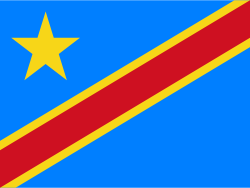Tragic Boat Fire in Congo Claims Lives and Leaves Hundreds Missing
 Congo, Democratic Republic
Congo, Democratic RepublicThe M23 rebel group has reportedly seized the city of Goma in eastern Democratic Republic of the Congo (DRC), marking a significant escalation in a conflict that has already displaced millions. Residents and journalists have reported gunfire and explosions, while unverified social media footage shows rebels entering the city on foot. The M23 claims to have "liberated" Goma, a claim the Congolese government strongly disputes.
Goma, home to approximately one million people, has long been a refuge for those displaced by conflict. Approximately 400,000 individuals have fled their homes in recent weeks due to escalating fighting between M23 rebels and the Congolese army. Many of these displaced persons have found shelter in Goma's overcrowded refugee camps, bringing the total number of displaced individuals in eastern Congo to several million.
The M23, which has emerged as the strongest of numerous rebel groups in the region, has been reported to receive support from neighboring Rwanda, including weapons and personnel. Current estimates suggest that between 3,000 to 4,000 Rwandan soldiers may be on the ground in DRC. The M23's recent offensive has allowed it to rapidly advance, sparking renewed concern over the potential regional implications of this conflict.
In response to the deteriorating situation, several international bodies, including the United Nations and the European Union, have condemned Rwanda's military involvement in DRC, labeling it a clear violation of international law. UN Secretary-General António Guterres has called for Rwanda to cease its support for M23 and withdraw its forces from Congolese territory.
As fighting continues, the humanitarian situation in Goma remains dire, with reports of looting and power outages. Local residents are living in fear, with many choosing to stay indoors to avoid stray bullets amid the chaos. The conflict, which has roots dating back to the Rwandan Genocide, threatens to escalate into a wider regional war if not addressed.
 Congo, Democratic Republic
Congo, Democratic Republic Congo, Democratic Republic
Congo, Democratic Republic Congo, Democratic Republic
Congo, Democratic Republic